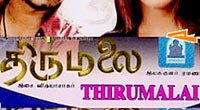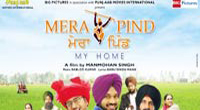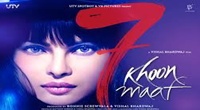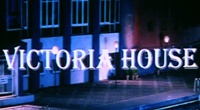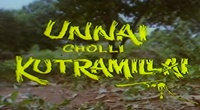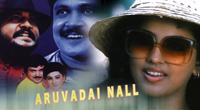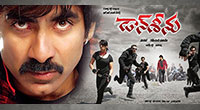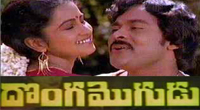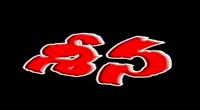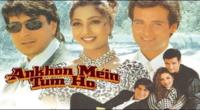Shoah is a 1985 French documentary film about the Holocaust, directed by Claude Lanzmann. Over nine hours long and 11 years in the making, the film presents Lanzmann's interviews with survivors, witnesses and perpetrators during visits to German Holocaust sites across Poland, including extermination camps.
| Shoah | |
|---|---|
US theatrical release poster | |
| Directed by | Claude Lanzmann |
| Starring |
|
| Cinematography |
|
| Edited by |
|
| Distributed by | New Yorker Films |
Release date | Paris, 30 April 1985 |
Running time | 566 minutes |
| Country | France |
| Language |
|
| Awards |
|
| Box office | $20,175 |
Released in Paris in April 1985, Shoah won critical acclaim and several prominent awards, including the New York Film Critics Circle Award for Best Non-Fiction Film and the BAFTA Award for Best Documentary. Simone de Beauvoir hailed it as a "sheer masterpiece", while documentary maker Marcel Ophüls called it "the greatest documentary about contemporary history ever made". The film was not well received in Poland; the Polish government argued that it accused Poland of "complicity in Nazi genocide".
Shoah premiered in New York at the Cinema Studio in October 1985 and was broadcast in the United States by PBS over four nights in 1987. In 2000 it was released on VHS and in 2010 on DVD. Lanzmann's 350 hours of raw footage, along with the transcripts, are available on the website of the United States Holocaust Memorial Museum.
The entire 566-minute film was digitally restored and remastered by The Criterion Collection over 2012–13 in 2k resolution, from the original 16mm negatives. The monaural audio track was remastered without compression. A Blu-ray edition in three disks was then produced from these new masters, including three additional films by Lanzmann.
Screenplay
Overview
The film is concerned chiefly with four topics: the Che?mno extermination camp, where mobile gas vans were first used by Germans to exterminate Jews; the death camps of Treblinka and Auschwitz-Birkenau; and the Warsaw ghetto, with testimonies from survivors, witnesses and perpetrators.
The sections on Treblinka include testimony from Abraham Bomba, who survived as a barber; Richard Glazar, an inmate; and Franz Suchomel, an SS officer. Bomba breaks down while describing how a barber friend of his came across his wife and sister while cutting hair in an anteroom of the gas chamber. This section includes Henryk Gawkowski, who drove transport trains while intoxicated with vodka. Gawkowski's photograph appears on the poster used for the film's marketing campaign.
Testimonies on Auschwitz are provided by Rudolf Vrba, who escaped from the camp before the end of the war; and Filip Müller, who worked in an incinerator burning the bodies from the gassings. Müller recounts what prisoners said to him, and describes the experience of personally going into the gas chamber: bodies were piled up by the doors "like stones". He breaks down as he recalls the prisoners starting to sing while being forced into the gas chamber. Accounts include some from local villagers, who witnessed trains heading daily to the camp and returning empty; they quickly guessed the fate of those on board.
Lanzmann also interviews bystanders. He asks whether they knew what was going on in the death camps. Their answers reveal that they did, but they justified their inaction by the fear of death. Two survivors of Che?mno are interviewed: Simon Srebnik, who was forced to sing military songs to entertain the Nazis; and Mordechaï Podchlebnik. Lanzmann also has a secretly filmed interview with Franz Schalling, a German security guard, who describes the workings of Che?mno. Walter Stier, a former Nazi bureaucrat, describes the workings of the railways. Stier insists he was too busy managing railroad traffic to notice his trains were transporting Jews to their deaths.
The Warsaw ghetto is described by Jan Karski, a member of the Polish Underground who worked for the Polish government-in-exile, and Franz Grassler, a Nazi administrator in Warsaw who liaised with Jewish leaders. A Christian, Karski sneaked into the Warsaw ghetto and travelled using false documents to England to try to convince the Allied governments to intervene more strongly on behalf of the Jews. Memories from Jewish survivors of the Warsaw Ghetto uprising conclude the documentary. Lanzmann also interviews Holocaust historian Raul Hilberg, who discusses the significance of Nazi propaganda against the European Jews and the Nazi development of the Final Solution and a detailed analysis of railroad documents showing the transport routes to the death camps. The complete text of the film was published in 1985.
Franz Suchomel
Corporal Franz Suchomel, interviewed by Lanzmann in Germany on 27 April 1976, was an SS officer who had worked at Treblinka. Suchomel agreed to be interviewed for DM 500, but he refused to be filmed, so Lanzmann used hidden recording equipment while assuring Suchomel that he would not use his name. Documentary maker Marcel Ophüls wrote: "I can hardly find the words to express how much I approve of this procedure, how much I sympathize with it."
Suchomel talks in detail about the camp's gas chambers and the disposal of bodies. He states that he did not know about the extermination at Treblinka until he arrived there. On his first day he says he vomited and cried after encountering trenches full of corpses, 6–7 m deep, with the earth around them moving in waves because of the gases. The smell of the bodies carried for kilometres depending on the wind, he said, but local people were scared to act in case they were sent to the work camp, Treblinka 1.:p.7-8
He explained that from arrival at Treblinka to death in the gas chambers took 2–3 hours for a trainload of people. They would undress, the women would have their hair cut, then they would wait naked outside, including during the winter in minus 10–20 °C, until there was room in the gas chamber. Suchomel told Lanzmann that he would ask the hairdressers to slow down so that the women would not have to wait so long outside.:p.19-20
Compared to the size and complexity of Auschwitz, Suchomel calls Treblinka "primitive. But a well-functioning assembly line of death.":p.16
Man in the poster
The publicity poster for the film features Henryk Gawkowski, a Polish train worker from Malkinia, who, in 1942–1943 when he was 20–21 years old, worked on the trains to Treblinka as an "assistant machinist with the right to drive the locomotive". Conducted in Poland in July 1978, the interview with Gawkowski is shown 48 minutes into the film, and is the first to present events from the victims' perspective. Lanzmann hired a steam locomotive similar to the one Gawkowski worked on, and shows the tracks and a sign for Treblinka.
Gawkowski told Lanzmann that every train had a Polish driver and assistant, accompanied by German officers. What happened was not his fault, he said; had he refused to do the job, he would have been sent to a work camp. He would have killed Hitler himself had he been able to, he told Lanzmann. Lanzmann estimated that 18,000 Jews were taken to Treblinka by the trains Gawkowski worked on. Gawkowski said he had driven Polish Jews there in cargo trains in 1942, and Jews from France, Greece, Holland and Yugoslavia in passenger trains in 1943. A train carrying Jews was called a Sonderzug (special train); the "cargo" was given false papers to disguise that humans beings were being hauled. The Germans gave the train workers vodka as a bonus when they drove a Sonderzug; Gawkowski drank liberally to make the job bearable.
Gawkowski drove trains to the Treblinka train station and from the station into the camp itself. He said the smell of burning was unbearable as the train approached the camp. The railcars would be driven into the camp by the locomotive in three stages; as he drove one convoy into Treblinka, he would signal to the ones that were waiting by making a slashing movement across his throat. The gesture would cause chaos in those convoys, he said; passengers would try to jump out or throw their children out. Dominick LaCapra wrote that the expression on Gawkowski's face when he demonstrated the gesture for Lanzmann seemed "somewhat diabolical". Lanzmann grew to like Gawkowski over the course of the interviews, writing in 1990: "He was different from the others. I have sympathy for him because he carries a truly open wound that does not heal."
Lanzmann was commissioned by Israeli officials to make what they thought would be a two-hour film, delivered in 18 months, about the Holocaust from "the viewpoint of the Jews". As time went on, Israeli officials withdrew as his original backers. Over 350 hours of raw footage were recorded, including the verbatim questions, answers, and interpreters' translations. Shoah took eleven years to make. It was plagued by financial problems, difficulties tracking down interviewees, and threats to Lanzmann's life. The film was unusual in that it did not include any historical footage, relying instead on interviewing witnesses and visiting the crime scenes. Four feature-length films have since been released from the outtakes.
Some German interviewees were reluctant to talk and refused to be filmed, so Lanzmann used a hidden camera, producing a grainy, black-and-white appearance. The interviewees in these scenes are sometimes obscured or distinguished by technicians watching the recording. During one interview, the covert recording was discovered and Lanzmann was physically attacked. He was hospitalized for a month and charged by the authorities with "unauthorized use of the German airwaves".
Lanzmann arranged many of the scenes, but not the testimony, before filming witnesses. For example, Bomba was interviewed while cutting his friend's hair in a working barbershop; a steam locomotive was hired to recreate the journey the death train conductor had taken while transporting Jews; and the opening scene shows Srebnik singing in a rowboat, similarly to how he had "serenaded his captors".
The first six years of production were devoted to the recording of interviews in 14 different countries. Lanzmann worked on the interviews for four years before first visiting Poland. After the shooting, editing of the 350 hours of raw footage continued for five years. Lanzmann frequently replaced the camera shot of the interviewee with modern footage from the site of the relevant death camp. The matching of testimony to places became a "crucial trope of the film".
Shoah was made without voice-over translations. The questions and answers were kept on the soundtrack, along with the voices of the interpreters, with subtitles where necessary. Transcripts of the interviews, in original languages and English translations, are held by the US Holocaust Memorial Museum in Washington, DC. Videos of excerpts from the interviews are available for viewing online, and linked transcripts can be downloaded from the museum's website.
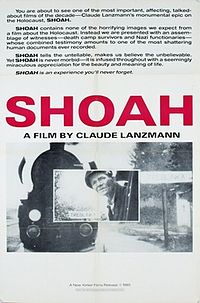 Story of movie Shoah Film :
Story of movie Shoah Film : 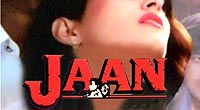
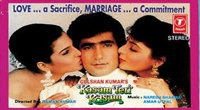
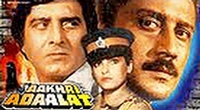
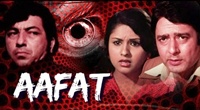
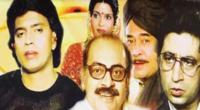
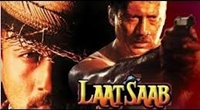
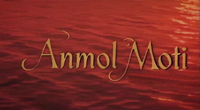

.jpg)
